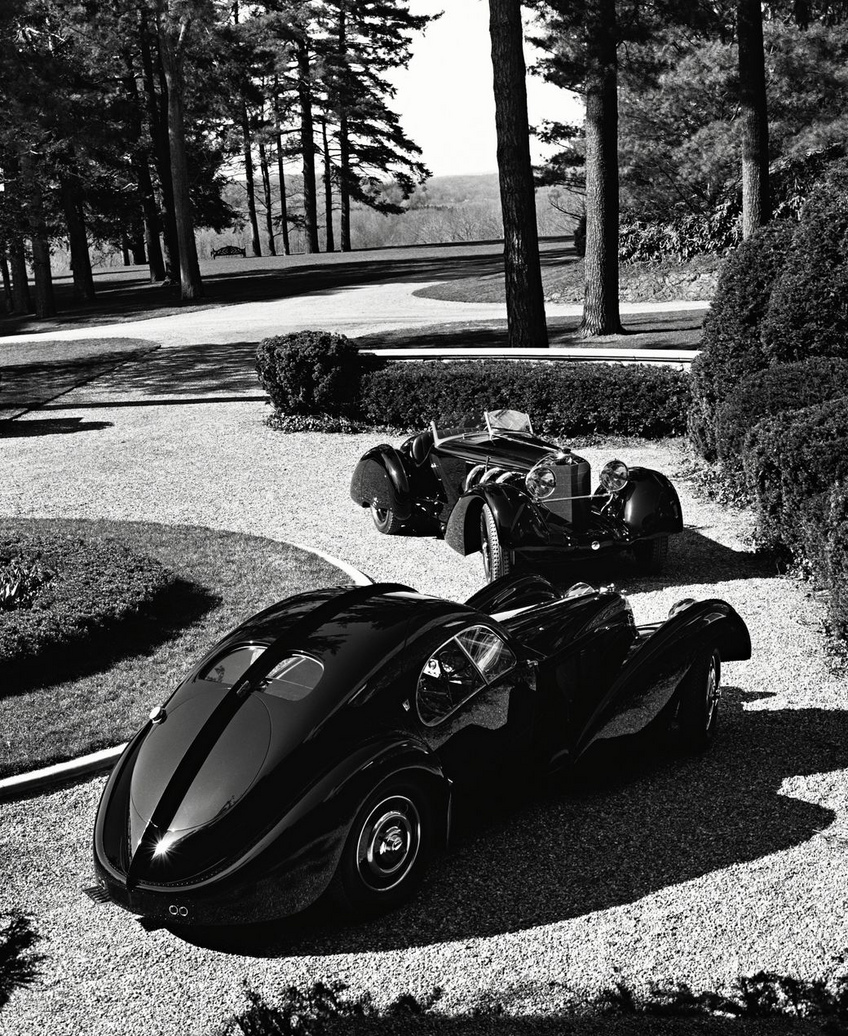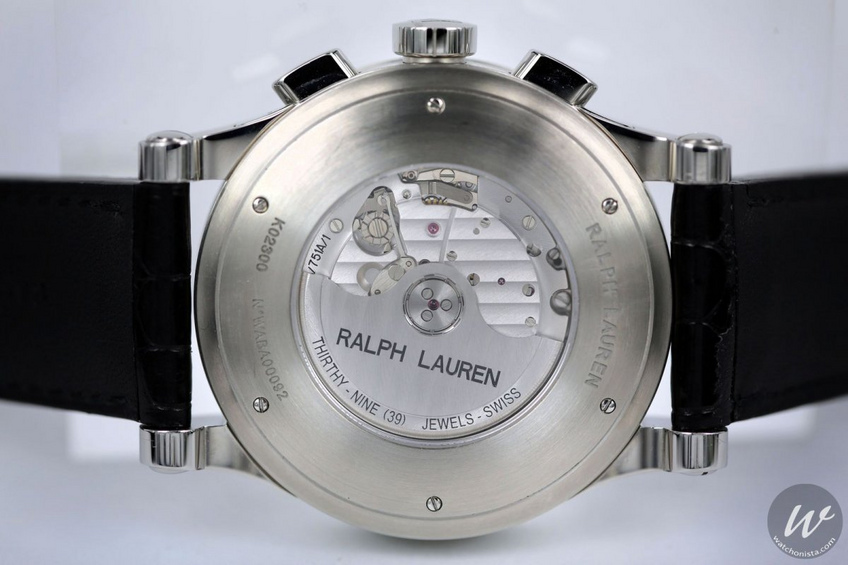
SIHH 2015 - the Ralph Lauren Automotive Chronograph, inspired by automotive art
Ralph Lauren is aware of the potential of transposing automobile-related codes into watchmaking. Hence, it has introduced the Automotive Chronograph. Its design is inspired by the rare 1938 Bugatti Type 57SC Atlantic Coupe.
Some car manufacturers are more enthusing than others for they imprint powerful pictures linked to the idea we have of success in the imagination of fans. The fabulous and rare 1938 Bugatti Type 57SC is an example of this. Only four models were ever produced of this car and Ralph Lauren acquired one of them in 2010. Their extreme popularity is ultimately due to their powerful design, their rarity and their captivating graphics. Following the principle that function defines shape, the radical technical solutions and the wish to keep this prestigious car lightweight without having to give up on details pushed the car manufacturer to use magnesium.

Since this metal cannot be welded, they had to use a radical design that made the car a true work of art with beautiful mechanics that had been carefully serviced to make sure it worked like a clock. All in all, an example of balance that inspired the self-winding steel chronograph, which will most certainly also become a cult entity in its respective field.
The underlying cause and effect
To create a positive association between the new timepiece and the 1938 Bugatti Type 57SC, the styling department chose to add an insert made of real elm burl on the dial. This is the same decorative hardwood that used to be used on the dashboards of luxury cars. For this piece, the wood is first-class and was meticulously chosen and cut in order to keep the best parts only. Then, it was treated to prevent it from disintegrating and shaped to fit the treated black metallic structure of the dial perfectly. The combination of wood and metal, more precisely the steel bezel’s brightness and the wood’s natural characteristic, reinforces the chronograph’s precious value.

The complication was chosen as it was commonly found in the dashboards of 1930s sport cars.
It was used to provide accurate measurements of the instantaneous speed of these wonderful racing cars. In order to do this, we just needed to choose a milestone to start the timer and then stop it at the next one. Thus, with the tachometer scale, we could read the average speed over one kilometer with the tip of the large chronograph hand. Note that at the time, this car could reach 210 km/h. An automobile capable of such feat was well worth having such timepieces on board to check the power of a ride with watchmaking precision.

A strong evocative power
Note that the design of the chronograph’s powerful 44.8-mm case in polished-brushed steel features a harmonious mix of traditional and more daring lines. The bezel screws are a visual reminder of the instrument’s mechanical component, but also note the original design of the polished rectangular push-pieces, which underline the power of the flank.Their special design incorporates joints, thus ensuring water resistance to 5 bars. This is very useful in countries with very high humidity levels.The piece, efficient in all situations, houses an automatic winding chronograph caliber referenced RL751A/1. Its development is based on the movement created by Jaeger-LeCoultre.

In order to differentiate it, the caliber – oscillating at 28,800 vibrations per hour – features a vertical clutch system and personalized aesthetic finishes that are visible through the transparent back. The finishes include côtes de Genève stripes and a specific beading.

This precise and efficient chronograph exudes positive energy. It features an alligator strap that is closed by a pin buckle and the case’s taut lines help boost its classic design and, ultimately, emphasize its elegance. All in all, when wearing the piece on our wrist, we see that its balance is very similar to that of the famous Bugatti Ralph Lauren bought in 2010 for the non-regrettable sum of €30 million. Nothing happens by chance and only true objects of art possess this subtle alchemy that inspires almost identical feelings about two different objects.





